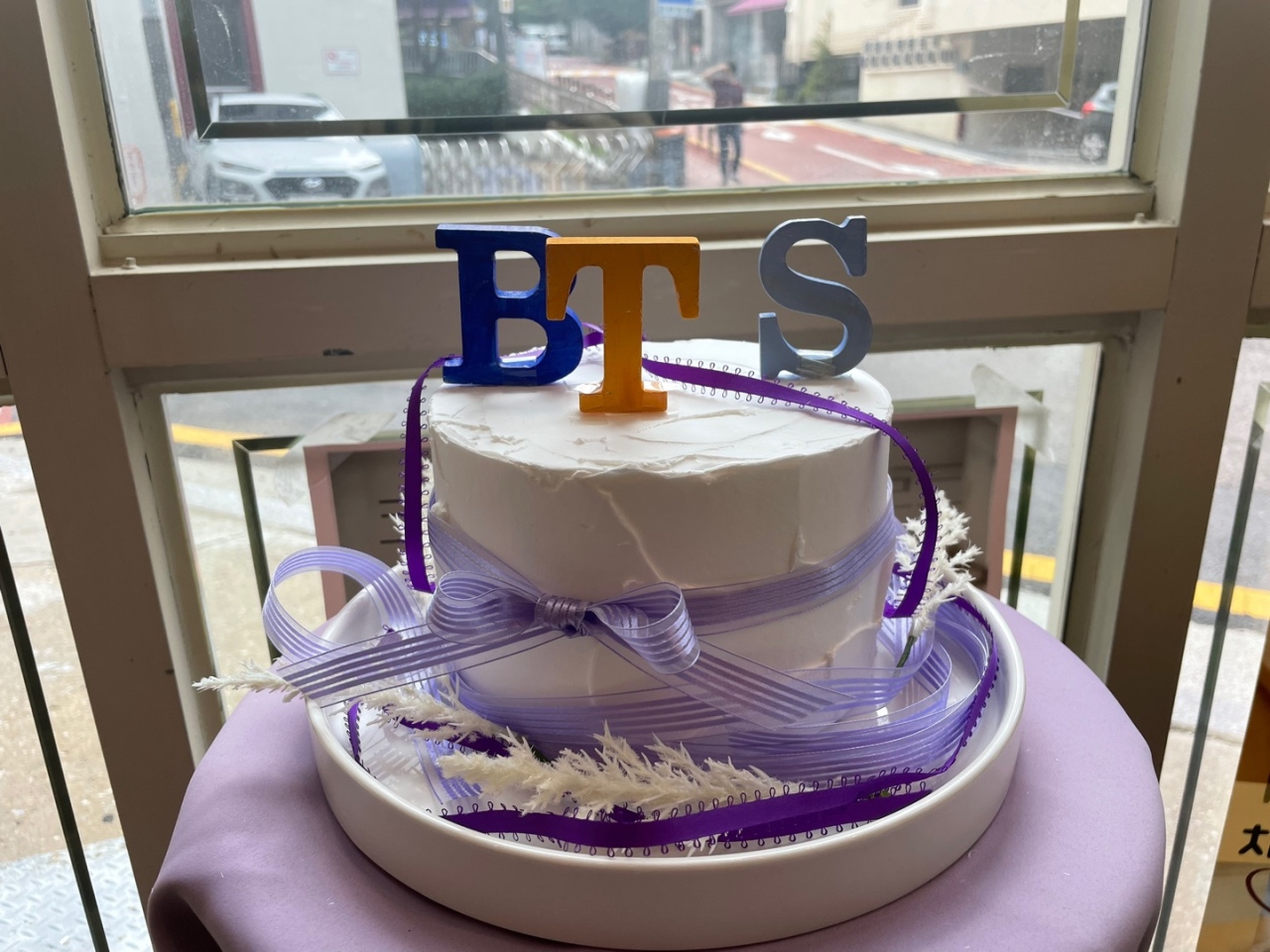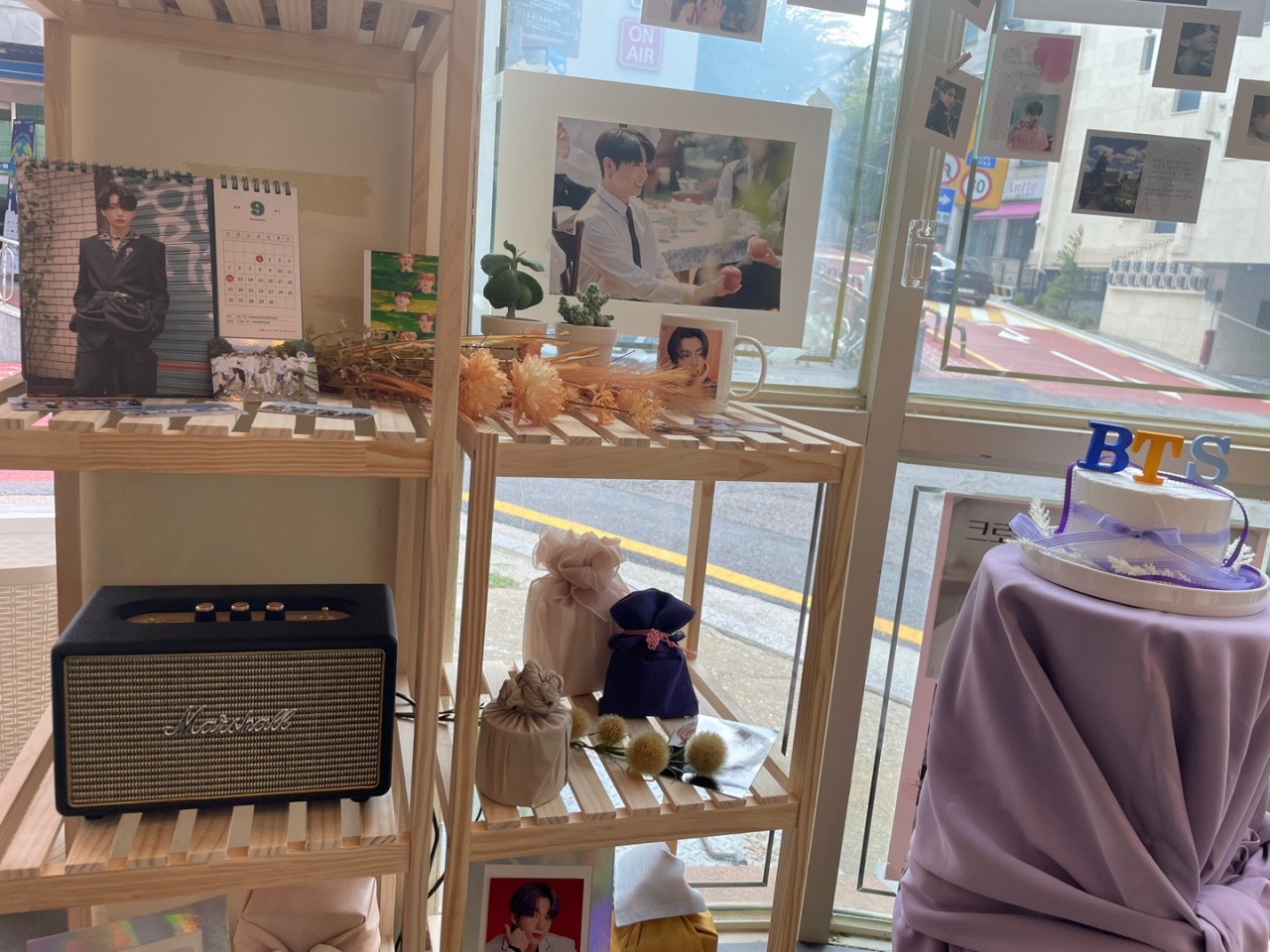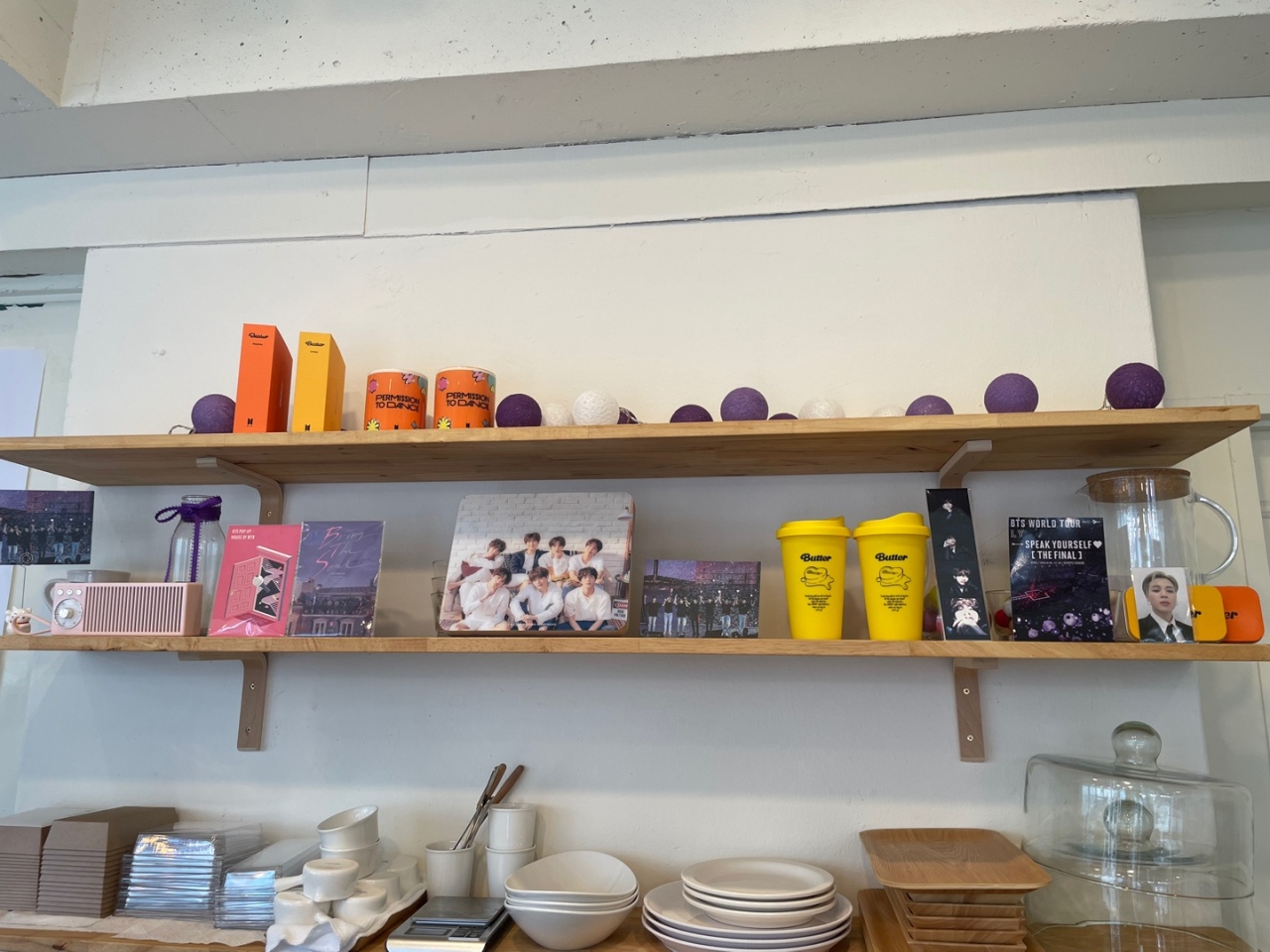[Feature] Goodies and give outs, how K-pop birthdays are celebrated
Fans deviate from old-fashioned fandom culture with self-made goodies, organizing private events
By Park Jun-heePublished : Sept. 1, 2021 - 17:55

Signboards welcoming bypassers for a cup of joe, the scent of a fresh bag of coffee beans, little nooks for a sip and music playing in the background are no different from an ordinary cafe.
But cafe buffs would see a minor tweak to the definition once stepping inside the venue.
Birthday cafes
Kim Na-young’s dream was to run a cafe business with her older sister. Although the two are nine years apart, they share similar tastes and hobbies. And after years of talking about living out their childhood dream, the sibling’s entrepreneurial venture came to reality by opening a coffee shop in Yangjae, southern Seoul, three months ago.
Kim and her sister often found themselves hopping on various birthday cafe tours during their favorite celebrities’ birthdays. “My sister and I talked about how we were open to hosting idol-related events if we had a cafe. And when we decided to open one, we quickly set the birthday cafe event in motion,” Kim told The Korea Herald.
The 31-year-old said zealous K-pop devotees had breathed new life into the fandom culture when the “cafe event” was introduced. Kim said the cafe is frequented and easily accessible by different age groups, including fans, so the fandom craze was not new.
The young owner said the cafe events and themes focus on global sensation BTS because the siblings are into the band.
Although the coffee shop usually greets coffee aficionados, Kim labeled her cafe as an “event-theme-based cafe,” referring to the special occasions the store has held since it opened its doors. She added that the grounds are open to regular customers during celebrations, and other fandoms are also welcome to organize events.
Unfamiliar becomes convention
The K-pop fandom revolves around the concept of “deokjil,” which translates into being actively obsessed over one’s favorite idol. The term is what drives various aspects of the K-pop idol fan culture: watching videos uploaded on various social media accounts, going to meet-and-greets and concerts, writing fan fiction and so on.
Years ago, avid music fans dedicated their time and money to celebrate their favorite singers’ birthdays in subway advertisements, on the sides of buses or sometimes even on high-rise billboards. But now, groups of individuals or fans often meet their singers at cafes on the special day.
The idea is simple. A group of fans or fans who work as amateur photographers dubbed “homma” rent out a cafe in Greater Seoul. The word is a portmanteau of “home” and “master,” and was first coined when shutterbugs operated their personal websites to share pictures they took of their favorite singers.

Idol fans used to find themselves spending an entire day celebrating birthdays, mainly near the posh Gangnam district where many A-list K-pop giants or entertainment facilities are situated. But homma have branched out to the bustling Hongdae area or nondescript Seongsu-dong to welcome more fans and coffee buffs.
Although the birthday boys and girls do not actually show up most of the time, homma and fans are satisfied that they get to see and show their idols through exclusive goodies, pictures on the wall, music played all day and custom-made cup sleeves.
Rental fees are paid for by selling the pictures, videos and exclusive merchandise made with photos taken by the homma. Leftover cash is sometimes used to run other events or donated to idols’ fan clubs.
So when a well-known musician’s birthday nears, homma and a group of fervent devotees come together at cafes to invite other idol lovers. Fans get information about which homma will host an event and later travel to the spot to take pictures.
And if they are lucky enough, fans who stop by the birthday cafe could be able to walk out the doors with unique or even limited edition goods provided by organizers in their hands, although the giveaways are mainly on a first-come, first-served basis.
Shift in consumption patterns
Various merchandise and birthday-related events used to be solely organized and sold by entertainment companies. When a group came out with its latest print, agencies would present a wide range of idol-related goodies, such as T-shirts, accessories, lightsticks and water bottles. And when the bandmates wear or use these goods, the items sell out instantly. Agencies would also arrange small meet-and-greet birthday parties with the singer and fans.

K-pop merchandise has witnessed soaring sales in recent years. According to e-commerce platform eBay Korea, sales for the goodies in March 2019 rose more than 50 percent compared to the same month in the previous year. Also, sales in April rose 57 percent compared to 2018.
In particular, fans who cannot visit Korea to see their favorite singers flocked to online platforms to purchase merchandise produced by agency labels. And as the Korean music scene has gradually increased in size, more foreign fans are taking themselves to online Korean platform channels.
But K-pop superfans have been expanding their consumption horizons in a new direction as the industry’s fame has grown far and wide.
Led by the rise of the Korean music scene, a growing number of enthusiasts started creating self-made items and various events that paved the way for a “goods” niche market. The market has since grown thanks to fans who were willing to invest their time and money to collect big and small souvenirs related to their favorite pop stars.
“Prices of the merchandise, the refund and exchange system, selling products with defects and ticket prices were moot points among fans and companies. Fans would obviously want to purchase at a lower price while entertainment labels would want the exact opposite,” said Lee Eun-hee, a consumer studies professor at Inha University.
She echoed her stance that fans have swerved to “prosumer” activities in recent years by actively engaging in making product lines that satisfy them. Lee added that media-savvy fans do not stay loyal to goodies presented by companies, as they can produce quality commodities themselves, although copyright issues could arise from this process.
She described the changeover as a “fan-centered play culture,” saying that agencies vend a limited amount of merchandise, but fans have idiosyncratic flairs to design unique products.
But she raised concerns about how the consumption market is becoming too commercialized. She added that the purchasing behavior of fans is getting out of hand.
“Idol devotees are creating, selling and buying products that are fashioned by themselves, which means agencies do not supply the commodities. However, prices are way off the displayed value.”
She added that prices would eventually drop if more items were traded among fans. “Various events and merchandise made by fans could invigorate the economy and be a tool of soft power in the long run,” she said.








![[Graphic News] More Koreans say they plan long-distance trips this year](http://res.heraldm.com/phpwas/restmb_idxmake.php?idx=644&simg=/content/image/2024/04/17/20240417050828_0.gif&u=)
![[KH Explains] Hyundai's full hybrid edge to pay off amid slow transition to pure EVs](http://res.heraldm.com/phpwas/restmb_idxmake.php?idx=644&simg=/content/image/2024/04/18/20240418050645_0.jpg&u=20240419100350)






![[From the Scene] Monks, Buddhists hail return of remains of Buddhas](http://res.heraldm.com/phpwas/restmb_idxmake.php?idx=652&simg=/content/image/2024/04/19/20240419050617_0.jpg&u=20240419175937)

![[KH Explains] Hyundai's full hybrid edge to pay off amid slow transition to pure EVs](http://res.heraldm.com/phpwas/restmb_idxmake.php?idx=652&simg=/content/image/2024/04/18/20240418050645_0.jpg&u=20240419100350)

![[Today’s K-pop] Illit drops debut single remix](http://res.heraldm.com/phpwas/restmb_idxmake.php?idx=642&simg=/content/image/2024/04/19/20240419050612_0.jpg&u=)